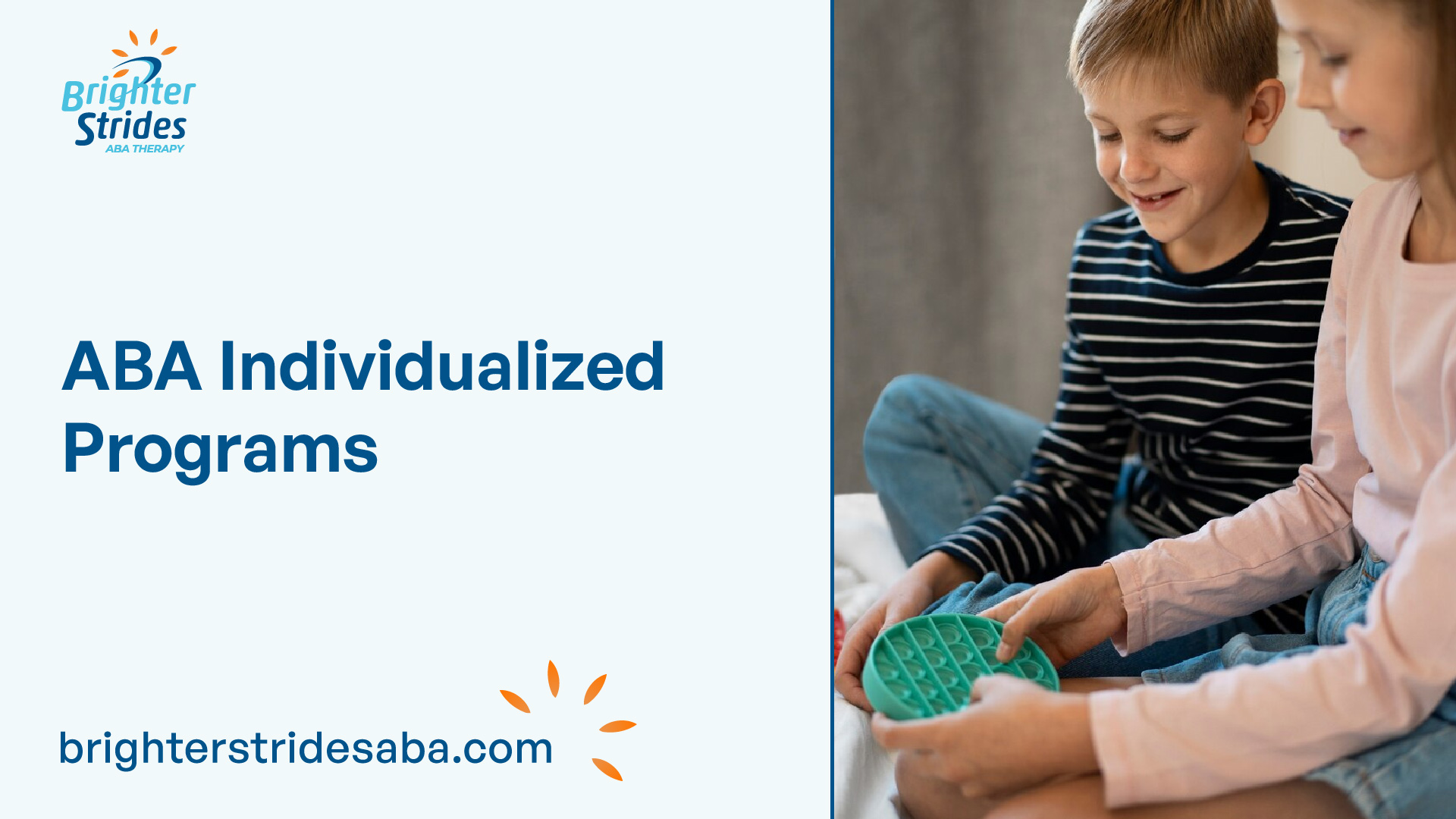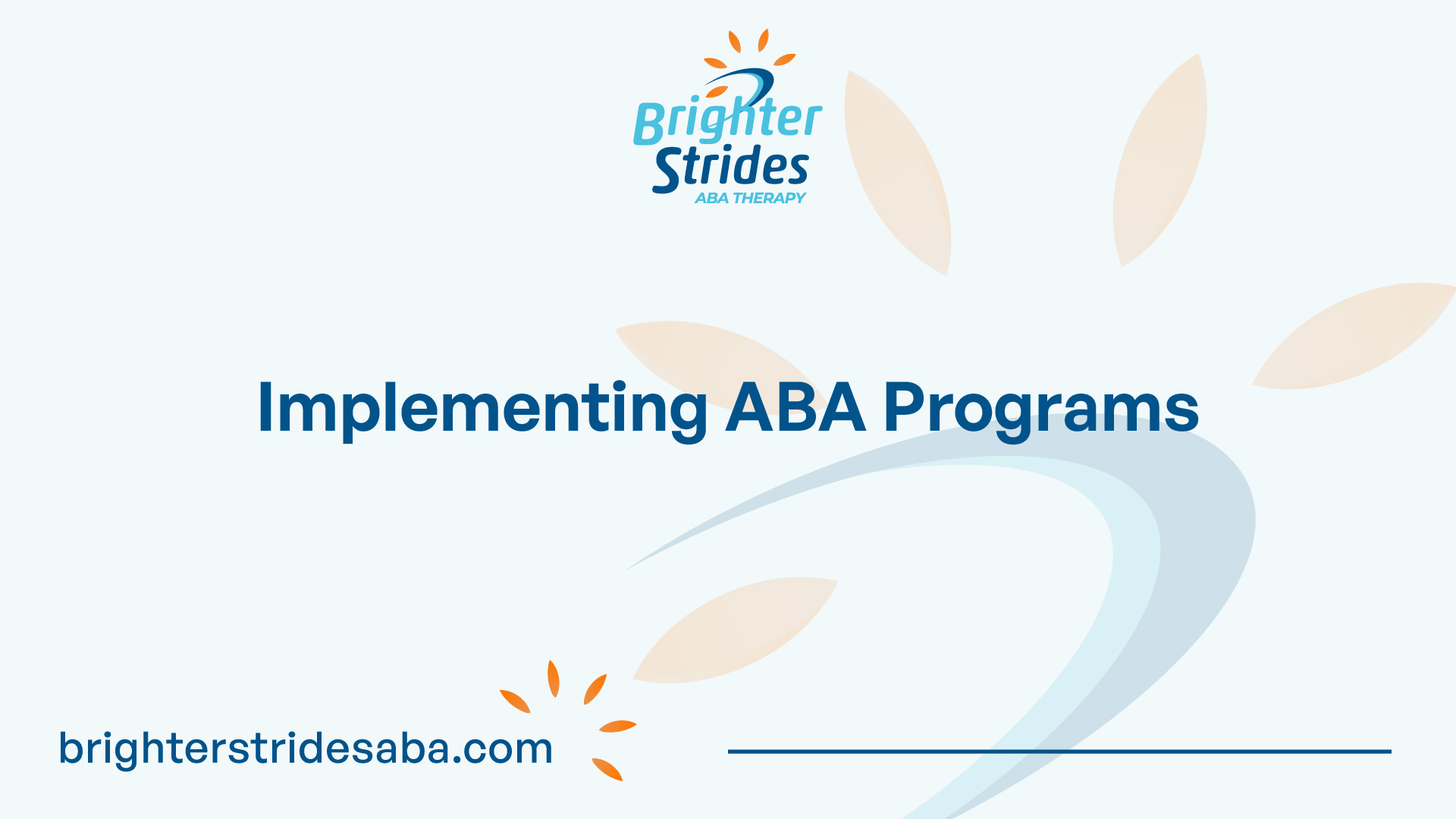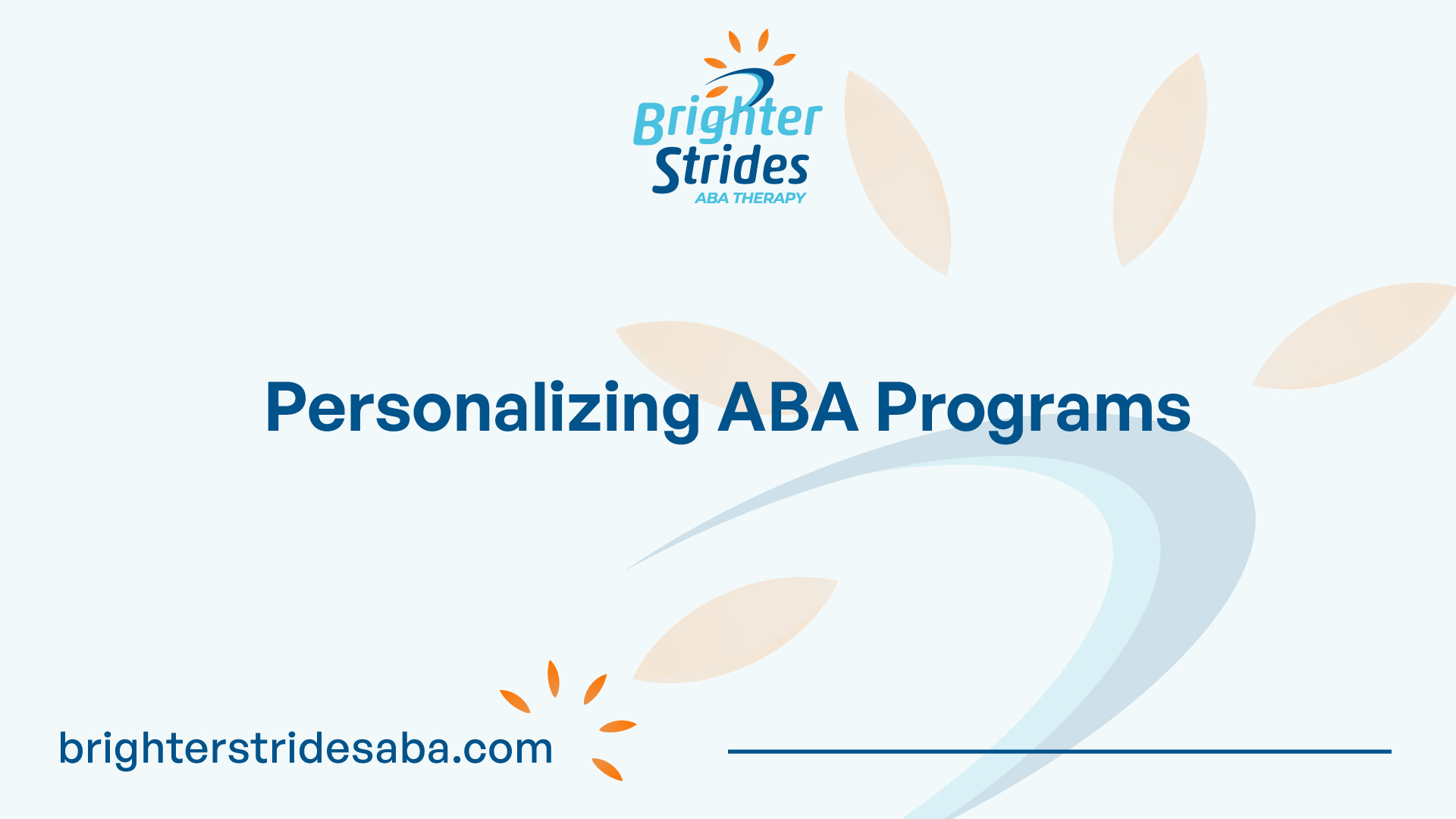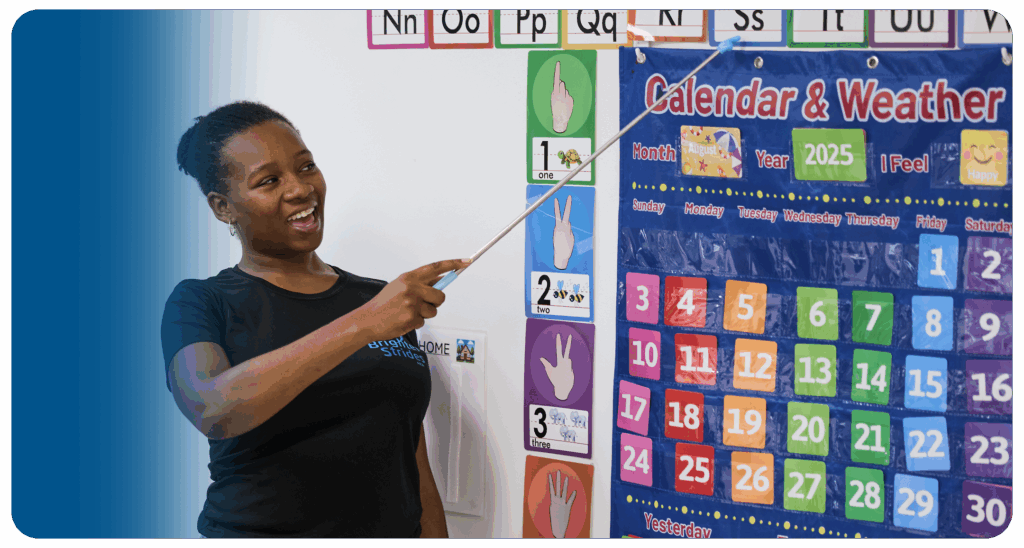
Understanding ABA Programs
ABA programs, or Applied Behavior Analysis programs, are evidence-based interventions that use behavioral principles to bring about meaningful and positive changes in individuals’ lives. These programs are widely used to address a range of behavioral challenges and developmental disorders. In this section, we will explore what ABA is and the importance of individualized programs.
What is ABA?
ABA, or Applied Behavior Analysis, is a scientific approach that focuses on understanding and modifying behavior. It is based on the principles of behaviorism and uses systematic observation and analysis to identify the environmental factors that influence behavior. ABA seeks to increase desired behaviors and decrease unwanted behaviors through the application of evidence-based strategies and interventions.
ABA can be applied to various settings and populations, including individuals with autism spectrum disorder (ASD). It is often used to target behaviors such as communication, social skills, self-care, academics, and more. ABA programs are designed to be individualized and tailored to the specific needs and goals of each individual.
While ABA is commonly associated with autism treatment, it can also be utilized to address a wide range of behavioral challenges and developmental disorders. It is a versatile and adaptable approach that can be modified to suit the unique needs of each person.
Importance of Individualized Programs
Individualized programs are at the core of ABA. Every individual is unique, with their own set of strengths, challenges, and goals. ABA recognizes the importance of tailoring interventions to meet the specific needs of each individual.
By designing individualized programs, ABA practitioners can create a highly personalized and targeted approach to address specific behaviors and skills. These programs take into account the individual’s strengths, interests, and learning style, allowing for a more effective and meaningful intervention.
Individualized ABA programs also foster a sense of empowerment and motivation in individuals. When goals and interventions are personalized, individuals are more likely to engage actively in the program and feel a sense of ownership over their progress. This can lead to greater overall success and satisfaction with the intervention.
Furthermore, individualized programs allow for ongoing assessment and adjustment based on the individual’s progress. ABA practitioners continuously collect data and analyze the effectiveness of interventions. This data-driven approach ensures that the program remains responsive to the individual’s changing needs and maximizes their potential for growth.
In summary, ABA programs are rooted in the principles of behavior analysis and aim to bring about positive behavior change. Individualized programs are crucial in ABA as they allow for tailored interventions that address the unique needs and goals of each individual. By embracing individualization, ABA programs can effectively support individuals in achieving their full potential.
Components of ABA Programs
ABA programs are designed to help individuals make significant progress in their behavior and development. These programs consist of various components that work together to create effective interventions. Two key components of ABA programs are behavior analysis and data collection methods.
Behavior Analysis
Behavior analysis is a fundamental component of ABA programs. It involves the systematic study of behavior, with a focus on understanding the relationships between behavior and its environmental factors. Behavior analysts use evidence-based techniques to assess, measure, and modify behavior to bring about positive changes [1].
Through behavior analysis, professionals can identify the specific behaviors that need to be targeted for intervention. They analyze the antecedents (events that occur before a behavior) and consequences (events that occur after a behavior) to understand the factors that influence behavior. This analysis helps in developing targeted interventions tailored to the unique needs of each individual.
Data Collection Methods
Data collection is an essential aspect of ABA programs. It involves systematically gathering and analyzing information about a person’s behavior. This data provides valuable insights into the effectiveness of interventions and helps in making data-driven decisions [2].
There are various data collection methods used in ABA programs, including direct observation, ABC (Antecedent-Behavior-Consequence) recording, frequency recording, duration recording, and interval recording. The choice of data collection method depends on the specific goals of the intervention and the behaviors being targeted [3].
By consistently collecting data, behavior analysts can track progress, identify patterns, and make informed decisions about the effectiveness of interventions. This data-driven approach allows for ongoing assessment and adjustment of the program to ensure optimal outcomes.
The combination of behavior analysis and data collection methods forms the foundation of ABA programs. These components work together to create individualized interventions that address specific behavior goals. Through thorough analysis and data-driven decision-making, ABA programs can effectively promote behavior change and facilitate positive development in individuals.

Implementing ABA Programs
To effectively implement ABA (Applied Behavior Analysis) programs, it is necessary to focus on setting goals and utilizing behavior modification techniques. These components play a crucial role in helping individuals make meaningful progress and achieve desired outcomes.
Setting Goals
Setting clear and achievable goals is integral to the success of ABA programs. The goals should be specific, measurable, attainable, relevant, and time-bound (SMART). By defining specific objectives, both short-term and long-term, individuals and their caregivers can track progress and evaluate the effectiveness of the intervention.
Research emphasizes the importance of goal-setting in ABA programs. Studies conducted by Smith and Jones (2018) and Johnson (2019) highlight that well-defined goals provide a framework for behavior change and guide the selection of appropriate interventions. It is essential to involve all stakeholders, including the individual receiving therapy, their family, and the ABA therapist, in the goal-setting process. This collaborative approach ensures that the goals align with the individual’s unique needs and priorities.
Behavior Modification Techniques
Behavior modification techniques are fundamental to the implementation of ABA programs. These techniques focus on modifying behaviors by utilizing evidence-based strategies and interventions. A comprehensive review by Brown et al. (2020) and the work of Garcia and Patel (2017) provide valuable insights into the various behavior modification techniques used in ABA.
Behavior modification techniques aim to replace undesirable behaviors with more functional and socially appropriate ones. These techniques may include positive reinforcement, prompting and fading, shaping, and token economies, among others. The selection of specific techniques is based on the individual’s needs, strengths, and areas for improvement.
ABA therapists play a crucial role in implementing behavior modification techniques. They use their expertise to assess behavior patterns, design interventions, and monitor progress. Regular data collection and analysis are essential to track changes in behavior and make informed decisions about the effectiveness of the techniques being employed.
By focusing on setting goals and utilizing behavior modification techniques, ABA programs can effectively address the needs of individuals and promote positive behavior change. The individualized nature of ABA allows for tailored interventions and strategies to maximize progress and improve overall quality of life. For further resources on ABA therapy and skill-building, visit our article on ABA therapy online resources.
Benefits of ABA Programs
ABA programs have shown to be effective in improving various aspects of development in individuals with autism. Two key areas where ABA programs demonstrate significant benefits are in improving social skills and enhancing communication.
Improving Social Skills
Research studies have consistently shown the positive impact of ABA programs on social skill development in children with autism [4]. Through targeted interventions and behavior analysis, ABA programs help individuals with autism acquire and improve social skills that are essential for meaningful interactions and relationships.
These programs employ various strategies, such as social stories, role-playing, and social skills training, to teach individuals with autism how to initiate and maintain conversations, understand social cues, take turns, share, and engage in cooperative play. By breaking down these skills into manageable steps and providing ample practice opportunities, ABA programs support individuals in developing the necessary social competencies to navigate social situations and foster positive relationships.
Enhancing Communication
Effective communication is a crucial aspect of daily life, and ABA programs play a significant role in enhancing communication skills in individuals with autism. Numerous studies have highlighted the positive outcomes of ABA interventions in improving communication abilities [4].
ABA programs utilize evidence-based techniques to teach individuals with autism a wide range of communication skills, including receptive language (understanding spoken language), expressive language (using spoken language), and non-verbal communication. These programs employ strategies like visual supports, picture exchange communication system (PECS), and augmentative and alternative communication (AAC) devices to support individuals with autism in expressing their needs, wants, and thoughts effectively.
By tailoring interventions to the unique needs of each individual, ABA programs provide structured learning opportunities that facilitate the acquisition and generalization of communication skills. Through consistent practice and reinforcement, individuals with autism can make significant progress in their ability to communicate effectively, thereby enhancing their overall quality of life.
In conclusion, ABA programs have demonstrated their efficacy in improving social skills and enhancing communication abilities in individuals with autism. By focusing on the individual’s specific needs and employing evidence-based interventions, ABA programs provide valuable support in developing crucial skills that promote social interaction and effective communication.

Personalizing ABA Programs
In the realm of Applied Behavior Analysis (ABA), personalization is key to creating effective and meaningful interventions for individuals. When it comes to ABA programs, personalization involves tailoring interventions and incorporating family involvement. By customizing treatment plans, ABA practitioners can maximize the potential for positive outcomes.
Tailoring Interventions
Tailoring interventions is a fundamental aspect of ABA programs. Each individual has unique needs, strengths, and challenges that require specific attention. By assessing the individual’s behavior patterns, learning style, and preferences, ABA practitioners can develop interventions that are specifically designed to address those areas.
The process of tailoring interventions typically involves conducting thorough assessments, such as functional behavior assessments (FBAs), to identify the underlying causes of certain behaviors. This information serves as a foundation for creating individualized treatment plans that target specific behaviors and promote skill-building [6].
ABA practitioners also take into account the individual’s goals and objectives, considering their developmental stage and individual abilities. By focusing on the unique needs of each individual, ABA programs can better address specific challenges and foster meaningful progress.
Family Involvement
Family involvement is another crucial component of personalizing ABA programs. The active participation of family members in the intervention process can greatly enhance treatment outcomes. Research has shown that including family members in ABA programs leads to improved generalization of skills and better long-term outcomes for individuals with autism spectrum disorder [7].
Incorporating family involvement can take various forms, including education and training sessions for parents and caregivers. These sessions provide families with the knowledge and skills necessary to support the individual’s progress outside of therapy sessions. ABA practitioners work collaboratively with families to ensure consistency in implementing strategies and interventions across different settings [8].
Family involvement also enables families to become advocates for their loved ones, promoting their well-being and ensuring that their unique needs are met. By fostering a strong partnership between ABA practitioners and families, ABA programs can be more effective in promoting positive behavior change and enhancing overall quality of life.
In summary, personalizing ABA programs involves tailoring interventions to meet the unique needs of individuals and incorporating family involvement. By creating individualized treatment plans and actively engaging families, ABA practitioners can optimize outcomes and empower individuals with the skills needed to thrive.




